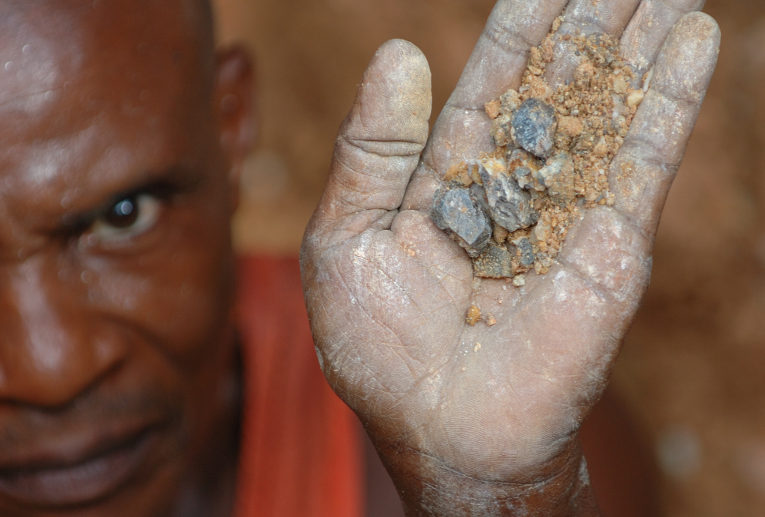In the wake of a rapidly evolving realignment of the world trading system resulting from the economic equivalent of World War III, President Joe Biden last week took the first of what are likely to be many steps toward building greater self-sufficiency for the United States.
Biden called for increasing U.S. production of key minerals used in the manufacture of electric vehicle batteries. He invoked the Defense Production Act which allows the government to support production of certain materials and goods deemed essential for national defense and even to order industry to mine minerals and make machinery including vehicles such as tanks and bombs.
For the Biden administration its first small step toward U.S. self-sufficiency consists of making companies which mine minerals key to electric vehicle batteries such as lithium, nickel, graphite, cobalt and manganese eligible for direct subsidies or purchase commitments to incentivize increased production. The applicable program (called Title III) has about $750 million to spend, not that much to rectify what is a huge deficit.
It’s worth looking at U.S. net imports of each of these minerals to understand just how hard reaching self-sufficiency will be. For starters, let’s examine a table from a U.S. Geological Survey (USGS) report about U.S. import dependence for key minerals:

Of the five minerals listed above, the United States is 100 percent dependent on imports for two: graphite and manganese. (It’s worth noting the China, Russia and Ukraine are among the top six producers of graphite and China is the largest producer by far. China and Ukraine are among the top five producers of manganese and again China is by far the biggest producer.)
Complete U.S. dependence on imports implies that there is no current production of these minerals in the United States and that nobody has even been looking for these minerals on U.S. soil. In a 2022 report the USGS confirms that “[g]raphite has not been produced in the U.S. since the 1950s.” This 2017 USGS report shows U.S. reserves of manganese to be exactly zero. Again, this almost certainly means that there is no mining production unless the USGS missed something.
(There are known deposits of “nodules” containing significant amounts of manganese distributed on the world’s seabeds. However, there is no commercially available technology for mining these and their future as a source of manganese remains uncertain. Moreover, they involve exploiting minerals that are not exactly on U.S. soil though they may in some cases be found in what is called the United States’ “Exclusive Economic Zone” extending out into the high seas.)
As a consequence of all this, it is unlikely that subsidies can help increase production before the end of the decade, if ever. This is because a mining company would first have to find commercial deposits of these minerals before beginning to delineate their scope, raise money for their development and then actually build the mine. This assumes, of course, that someone will also build sufficient industrial infrastructure to process these ores into something usable for the industries that need these minerals and the government that has promised to buy them. (For the technically minded, here is a short summary of the obstacles facing such processors regarding manganese.)
At best it would take several years for all this to happen. And, the mining company would be taking a risk that subsidies or purchase commitments might not be renewed since the development time could span two or more administrations. It is possible, of course, that no commercially attractive deposits would be found and efforts to restart graphite and manganese production in the United States would fail.
For cobalt the obstacles are similar though the United States produces some of the cobalt it uses, about 24 percent. There are known deposits of cobalt in the United States. Whether they are commercially viable would have to be determined. Most of the other difficulties that apply to graphite and manganese would also apply to cobalt.
The United States imports about half the nickel it uses and only 25 percent of the lithium it needs. These are better candidates for government incentives since there is active infrastructure, and mining of the existing and substantial commercially viable deposits could likely be expanded. One of the main questions here will be the environmental consequences. Environmentalists are concerned that companies will use the government’s desire to develop more domestic production to ignore environmental regulations.
The development of additional capacity could still take years to bring to fruition. There is no quick way to develop mines and the infrastructure around them short of a complete government takeover that requires no private investment and ignores costs and possibly safety and environmental requirements.
And, that brings us to one of the major obstacles to national self-sufficiency. We have created a system that is based almost exclusively on private economic actors who must convince private investors to plow money into any mining project. And, the market for minerals is generally worldwide so world prices govern which deposits will be viable.
That means that high-cost domestic deposits are never developed or, if developed, fail miserably when prices fall. The sad story of the rare earths Mountain Pass mine in California is instructive. This high-cost problem would imply that national self-sufficiency (or least reduced dependence on imports) would require ongoing price supports for the domestically mined minerals we deem most critical. No one is talking about that, and I doubt they ever will because it runs counter to the free-market laissez-faire ideology of those currently in charge of the world economy. And these leaders cannot yet fully imagine a world where de-globalization continues far into the future.
Photo: Wolframite and Casserite in the hands of a miner in the Democratic Republic of the Congo. By Julien Harneis (2007). Via Wikimedia Commons https://commons.wikimedia.org/wiki/File:Wolframite_Mining_in_Kailo3,_DRC.jpg






